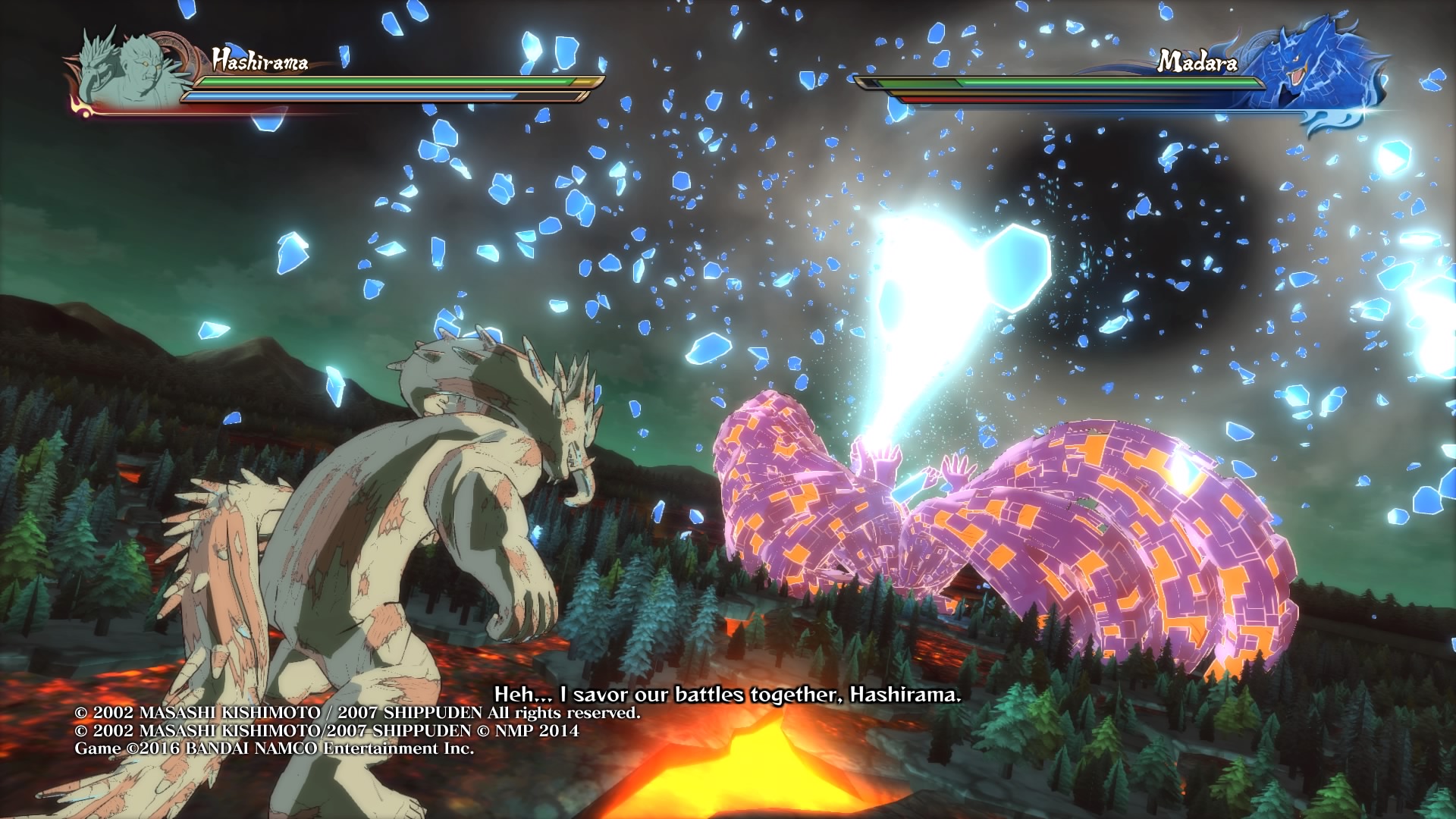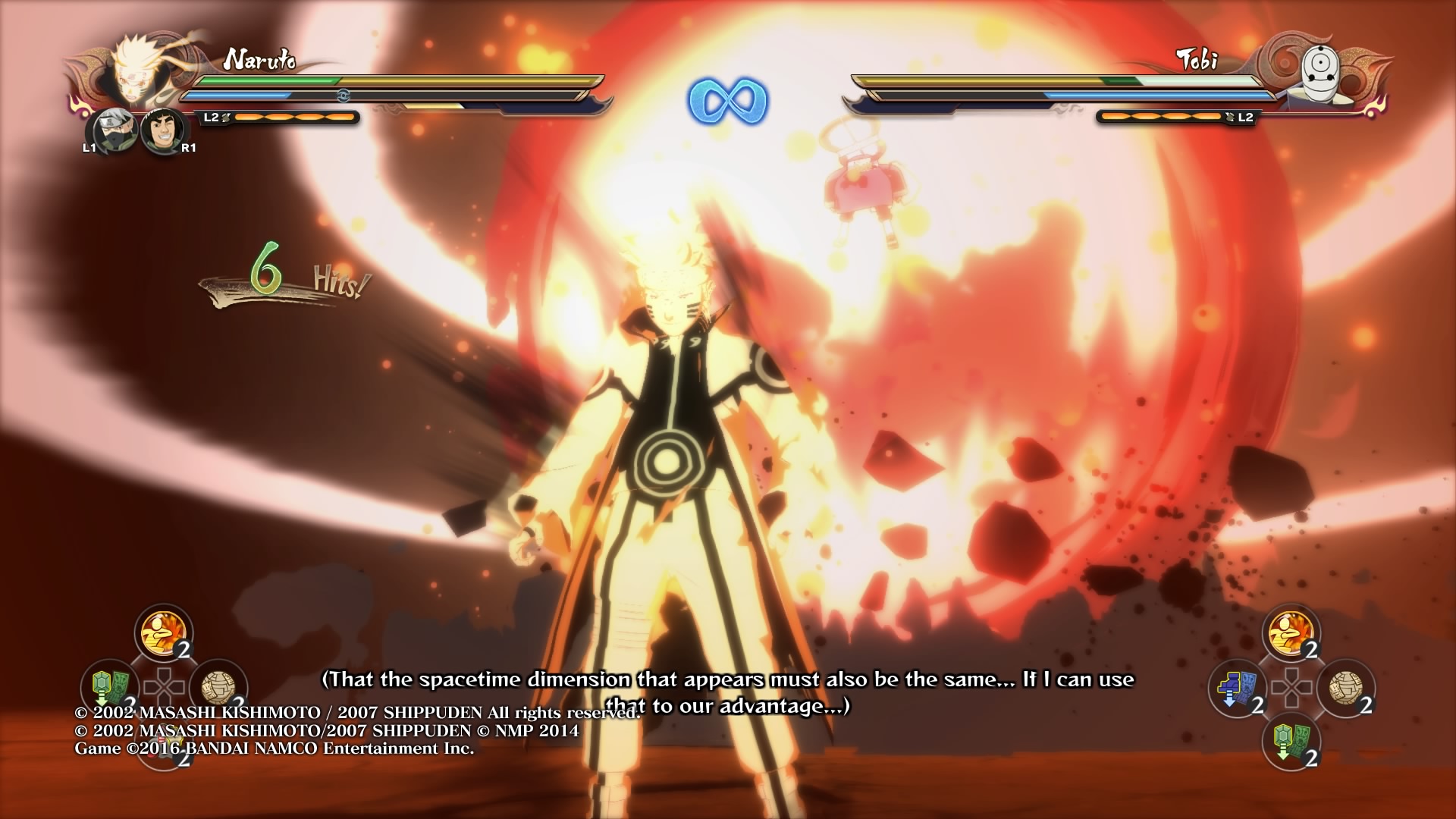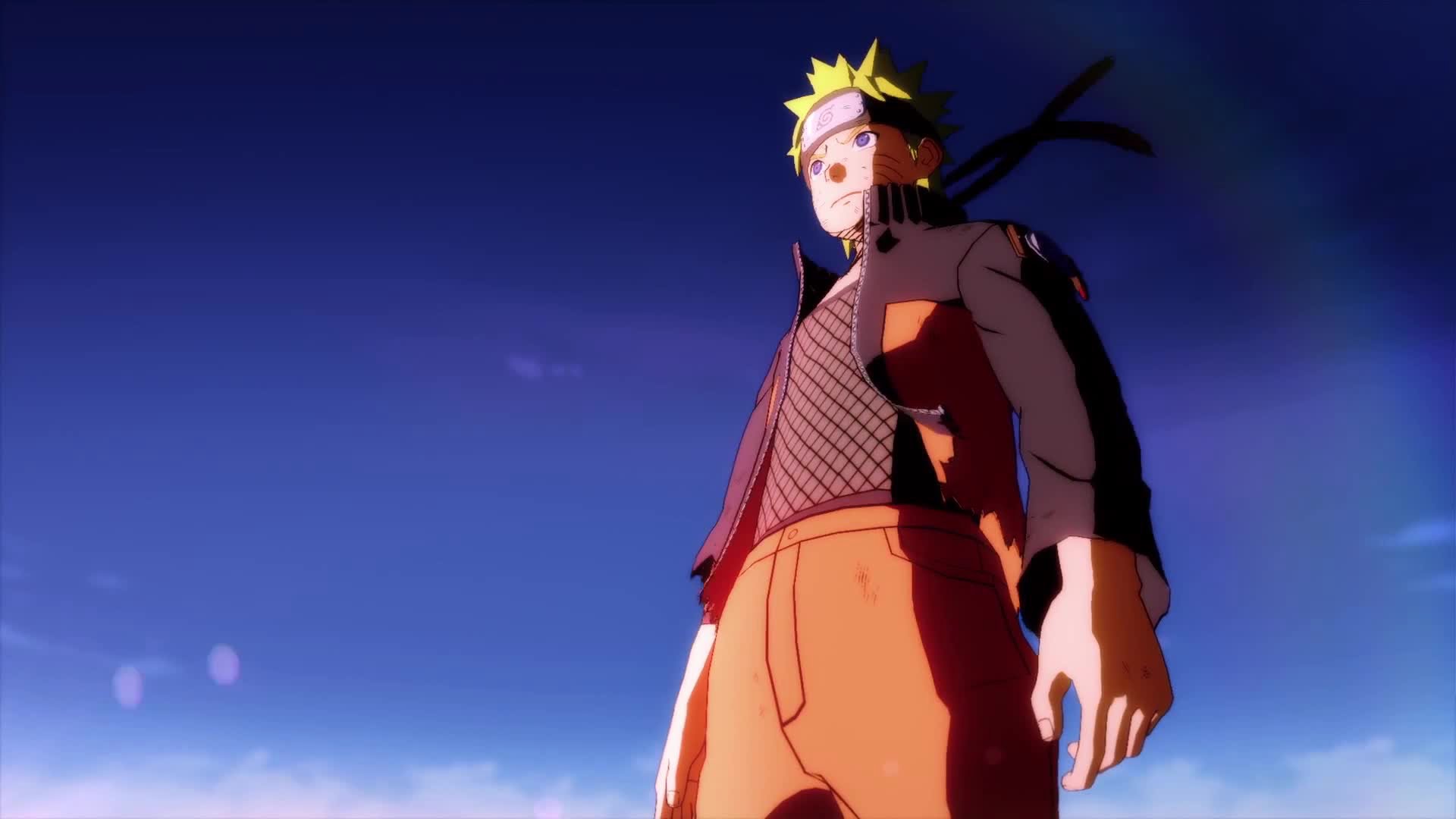Playing Naruto Shippuden: Ultimate Ninja Storm 4 has cemented my position that developer CyberConnect2 is one of the best teams out there for translating the look, scope and feel of anime to video games. Their earlier original title, Asura’s Wrath, formed its own entertaining and hilariously over-the-top mini-series that was uniquely stylish and surprisingly engaging. With the existing framework of the Naruto franchise to build off, the developers seem to have effortlessly translated the art into the third dimension, making Ultimate Ninja Storm 4 on PS4 one of the best-looking cel-shaded games I’ve seen.
The game’s main focus is on wrapping up the Naruto franchise, focusing on the final arc of the anime. It picks up right where Ultimate Ninja Storm 3 left off, as the young ninja Naruto prepares to face the villainous Tobi and his plan to re-make the world. There’s a lot of backstory to the Naruto franchise, as it’s a very long-running series, but Ultimate Ninja Storm 4 helps by summarising key points efficiently. Thankfully, key events that affect the mythology of the world and the story told in this game are presented and made playable, as the story opens with a near-mythological battle from the very start of the Naruto universe. From there, certain twists and turns in the story can require further explanation, and the game takes time to do so, with a lengthy flashback into Tobi’s past forming a good chunk of playtime. Cutscenes unfold with fully-voiced, but static slideshows, and occasionally more exciting 3D action scenes. Together, however, it forms a very well told and cohesive package that ends the Naruto saga confidently with style.
The game’s main Story mode follows a ‘Storyboard’ timeline, which unlocks further chapters as you proceed, occasionally offering small branching side-paths for extra story content. There are two main protagonists you’ll largely be following, Naruto and Sasuke. That’s not to say you’ll only be controlling these two, in fact the roster of characters in both the Story mode and Free Play is huge. Battles take the form of 1v1 fighting matches (although occasionally you’ll have to fight a mob of weaker foes). Many times you’ll have a party of three players to rotate between as well – Marvel vs. Capcom style. Unlike that series, however, they all share a single life bar. Changing between characters becomes less strategic and more cosmetic – there’s only really one attack button, a guard, a dodge and a chakra (mana) charge. However, quickly switching between fighters can let you continue chains, and utilise their different chakra powers for some cool-looking combos.
There is the ability to walk on walls, mainly serving the purpose of creating space between you and your enemy – you can quickly dodge out of being cornered and get some distance. That said, it does look a little silly, as you both remain stationary on a vertical surface. More interestingly, objectives thrown at you at the start of each fight encourage you to do more than simply pummel your opponent into submission. You might need to drop them from a height, use a special attack, or find a weapon on the battlefield to use – these can occasionally unlock simple story moments or flashes during the mission.
Much like Asura’s Wrath, the fights are littered with quicktime events for cinematic moments – these range from simple dodges and special attacks to full-blown choreographed fight sequences. You’re rated on your reaction time, and your star ranking can affect what rewards you receive to unlock further content.
The combat is ultimately fairly basic, and playing free battles or online can get a little repetitive. The real interest comes in seeing the effects of each character’s special attacks (or ‘jutsu’) than in becoming skilled as one character or another. Generally, once you’re skilled with combat with one, you’ll be fine with anyone else. That said, online multiplayer is handled well, although I could only find a couple of matches to participate in, but they were largely lag-free.
Outside of the Story mode is an additional Adventure mode, which can also be quite lengthy depending on whether it catches your interest. Taking place after the main storyline, and series, it places you in an RPG in the world of Naruto, starting at Hidden Leaf village and featuring many other areas. You can take on quests, side missions and explore locations that you wouldn’t otherwise be able to see in the main Story campaign. It’s slower paced and not as developed as other aspects of the game, and it’s not as open and free as, say, Naruto: Rise of the Ninja which let you run up and down walls all over town, but it’s a welcome chunk of content for fans to dig into. A lot of the enjoyment comes from continuing the storylines of many favourite characters, like Sakura or Hinata, after the main action.
I’m no expert on Naruto, but even I became a fan after playing through Ultimate Ninja Storm 4. There’s so much effort put into the presentation alone that it’s hard not to be engaged, and the gameplay (while simple) allows you to play across a massive roster of characters for some really cool looking and feeling battles. The Adventure RPG mode is a little dull, and it’s not as complex a fighting game as the Street Fighters and Mortal Kombats of the world. However, it is one of the best representations of an anime I’ve seen on a console yet, and if you’ve been following the series, or loved its characters, its absolutely worth checking out their final chapter.
Fantastically stylistic; Huge roster and tonnes of content; Well-told story that closes the Naruto saga
Somewhat basic combat; Can get a little repetitive






